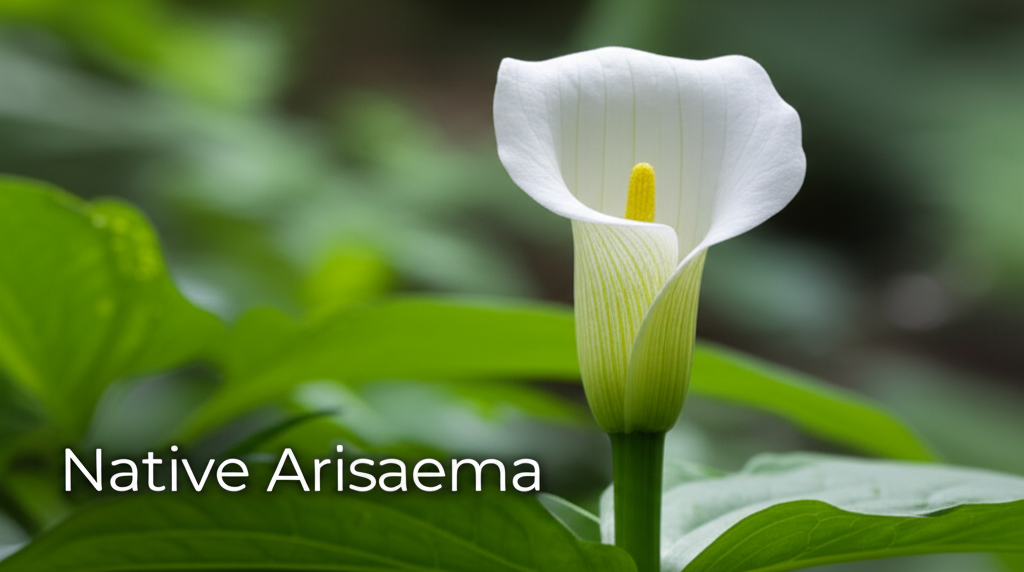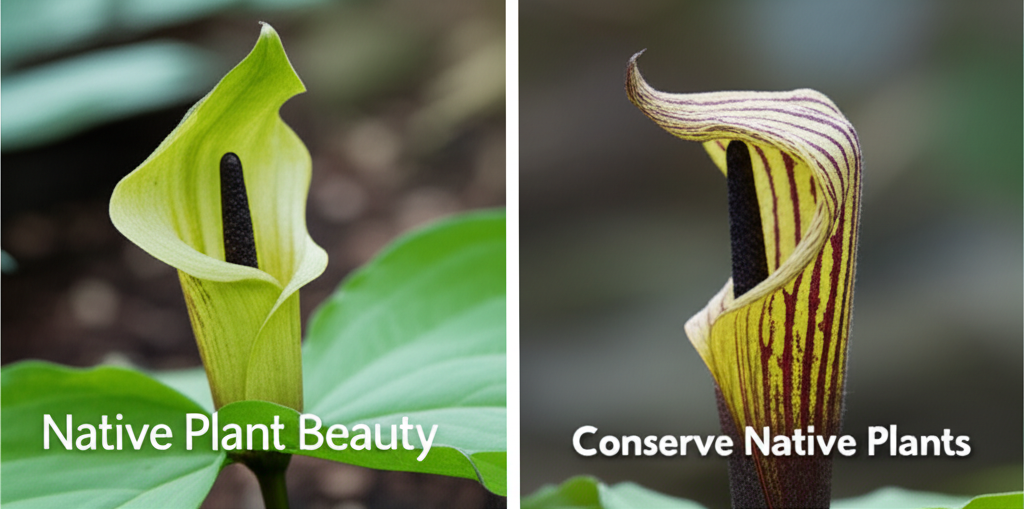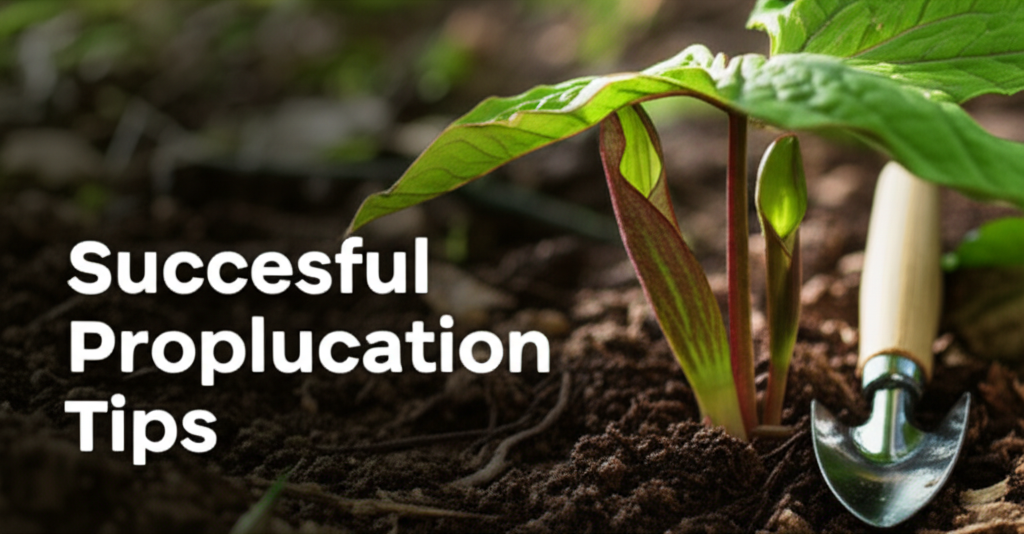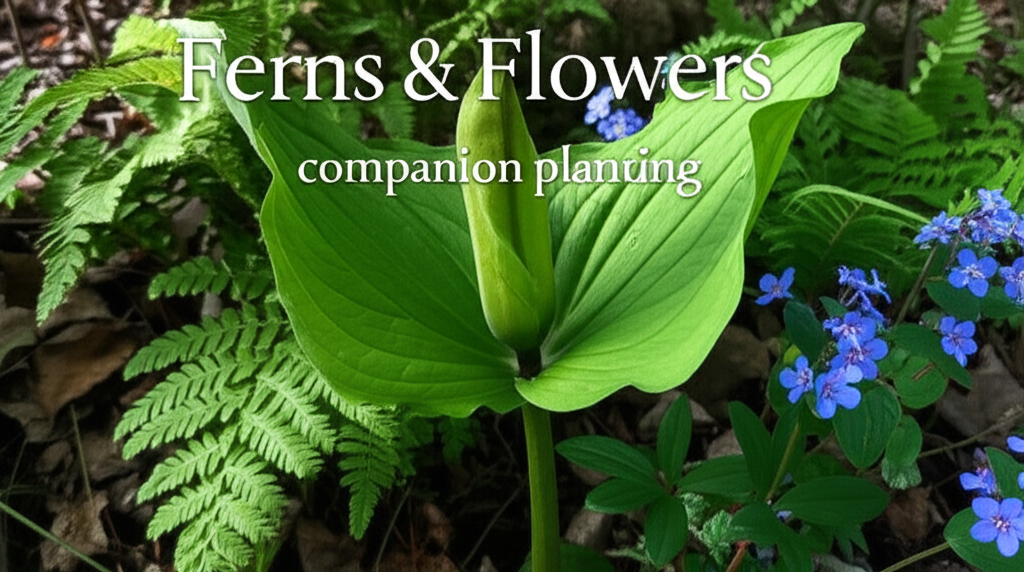Unveiling the Enigmatic Jack-in-the-Pulpit
The Jack-in-the-Pulpit, scientifically known as Arisaema triphyllum, is a captivating woodland perennial that evokes a sense of mystery and wonder. Its unique inflorescence, resembling a preacher in a pulpit, has earned it a place in folklore and a cherished spot in the hearts of native plant enthusiasts. Beyond its striking appearance, this remarkable plant plays a vital role in supporting native ecosystems and offers a wealth of benefits for conservation-minded gardeners. This article delves into the fascinating world of the Jack-in-the-Pulpit, exploring its biology, ecological importance, cultivation requirements, and its indispensable contribution to creating thriving native plant conservation gardens.
Botanical Wonders and Ecological Significance

The Jack-in-the-Pulpit is a member of the Araceae family, which also includes familiar plants like calla lilies and philodendrons. Its common name stems from the distinctive spathe, a hooded, leaf-like bract that encloses the spadix, a fleshy spike bearing the tiny, greenish-brown flowers. The spathe can vary in color from green to deep purple or maroon, often striped, adding to its visual appeal. The plant typically produces one or two trifoliate leaves, each with three leaflets.
What makes the Jack-in-the-Pulpit particularly fascinating is its unique reproductive strategy and its role as a food source for various wildlife. The spadix produces a cluster of small berries in late summer or fall, which are a valuable food source for birds, squirrels, and other small mammals. The plant itself is also a host plant for certain moth species. Its presence indicates a healthy woodland environment, rich in organic matter and moisture.
Key Facts About Jack-in-the-Pulpit
| Characteristic | Description |
|---|---|
| Scientific Name | Arisaema triphyllum |
| Family | Araceae |
| Native Range | Eastern North America |
| Habitat | Moist, shady woodlands, stream banks, wooded ravines |
| Bloom Time | Late spring to early summer |
| Flower Color | Greenish-brown, often with maroon or purple stripes |
| Fruit | Red berries in late summer/fall |
| Mature Height | 1-3 feet |
| Light Requirements | Shade to partial shade |
| Soil Requirements | Rich, moist, well-drained soil with ample organic matter |
| Toxicity | Contains calcium oxalate crystals; all parts are toxic if ingested raw. |
The Jack-in-the-Pulpit in the Native Plant Conservation Garden
In the realm of native plant conservation, the Jack-in-the-Pulpit stands out as a cornerstone species. Its inclusion in a garden designed for ecological benefit offers a multitude of advantages:
- Habitat Creation: Provides essential shelter and food for a variety of native insects, birds, and small mammals.
- Biodiversity Enhancement: Supports the intricate web of life, contributing to a more robust and resilient ecosystem.
- Soil Health Improvement: Its decomposition contributes to the rich humus layer characteristic of healthy woodlands.
- Water Management: Its preference for moist environments can help in natural water retention within the garden.
- Educational Value: Its unique appearance and life cycle offer a compelling opportunity to educate visitors about native flora and fauna.
- Aesthetic Appeal: Adds a touch of wild, natural beauty with its intriguing form and seasonal interest.
Cultivating Your Own Woodland Jewel
Successfully growing Jack-in-the-Pulpit requires understanding its natural habitat and replicating those conditions in your garden. These plants thrive in dappled shade and require consistent moisture.
Optimal Growing Conditions:
- Light: Prefers shady to partially shady conditions. Direct, intense sunlight can scorch its leaves. A woodland setting or the north side of a building is ideal.
- Soil: Rich, organic, and consistently moist soil is paramount. Incorporate compost or well-rotted leaf mold to enhance fertility and moisture retention. While it appreciates moisture, good drainage is also crucial to prevent root rot.
- Water: Regular watering is essential, especially during dry spells. The soil should remain consistently damp but not waterlogged.
- Location: Ideal for woodland gardens, beneath deciduous trees, along shaded stream banks, or in moist, shady borders.
Propagation and Planting:
Jack-in-the-Pulpit can be propagated from seeds or by dividing rhizomes. Seed propagation is a slower process, often taking several years for the plant to reach maturity. Division of rhizomes is more common for gardeners.
Steps for Division and Planting:
- Timing: The best time to divide rhizomes is in the fall after the foliage has died back or in early spring before new growth emerges.
- Excavation: Carefully dig up the parent plant, taking care not to damage the rhizome.
- Division: Gently separate the rhizome into smaller sections, ensuring each section has at least one “eye” or bud.
- Replanting: Plant the divisions about 4-6 inches deep in their prepared new locations.
- Watering: Water thoroughly after planting and maintain consistent moisture.
When planting seeds, sow them in a moist, shady location in the fall. They will typically germinate the following spring. Patience is key with seed-grown plants.
Challenges and Considerations
While rewarding, growing Jack-in-the-Pulpit does come with a few considerations:
- Toxicity: All parts of the plant, especially the raw rhizome, contain calcium oxalate crystals, which can cause irritation to the mouth and digestive tract if ingested. While this deters most herbivores, it’s important to be aware of this if you have pets or young children who might be tempted to taste unknown plants. Properly prepared, the cooked rhizome has historically been used as a food source, but this requires expert knowledge and should not be attempted without guidance.
- Patience: As mentioned, these plants can take time to establish and mature, particularly when grown from seed.
- Specific Conditions: They are not tolerant of drought or prolonged direct sunlight.
Integrating Jack-in-the-Pulpit into Your Garden Design
The Jack-in-the-Pulpit is a versatile plant that can be integrated into various native garden designs:
Companion Planting for Success:
Pairing Jack-in-the-Pulpit with other native woodland plants that share similar growing requirements can create a harmonious and ecologically functional garden:
- Ferns: Lady Fern (Athyrium filix-femina), Maidenhair Fern (Adiantum pedatum)
- Wild Ginger: (Asarum canadense)
- Trilliums: (Trillium spp.)
- Woodland Phlox: (Phlox divaricata)
- Foamflower: (Tiarella cordifolia)
- Ostrich Fern: (Matteuccia struthiopteris)
These companions not only create a beautiful and layered aesthetic but also contribute to a more diverse and resilient microhabitat. The varying textures and bloom times of these species ensure visual interest throughout the growing season.
Pros and Cons of Planting Jack-in-the-Pulpit
| Pros | Cons |
|---|---|
| Supports native wildlife with berries and habitat. | Contains toxic compounds if ingested raw. |
| Unique and captivating botanical specimen. | Requires consistent moisture and shade; not drought-tolerant. |
| Contributes to soil health and biodiversity. | Can take several years to mature from seed. |
| Adds distinct visual interest to shady areas. | May be susceptible to slug and snail damage. |
| Relatively low maintenance once established. | Specific soil and light conditions are crucial for success. |
Conservation Beyond the Garden Fence
The importance of Jack-in-the-Pulpit extends beyond its role in private gardens. Its presence in natural woodlands serves as an indicator of ecological health. Habitat loss and fragmentation pose significant threats to native plant populations, including this woodland gem. By choosing to plant and propagate Jack-in-the-Pulpit in our gardens, we actively participate in its conservation. This helps to:
- Maintain genetic diversity.
- Provide stepping stones for pollinators and seed dispersal.
- Educate the public about the value of native flora.
- Contribute to the restoration of natural habitats.
Conclusion: A Worthy Addition to Any Native Garden
The Jack-in-the-Pulpit is more than just an unusual plant; it is a symbol of the wild beauty and ecological interconnectedness that native plant conservation gardens strive to achieve. Its intriguing form, its service to wildlife, and its straightforward (though specific) cultivation requirements make it an excellent choice for any gardener looking to enhance biodiversity and create a more naturalistic landscape. By embracing this enigmatic woodland native, you contribute to the preservation of our precious natural heritage, one captivating pulpit at a time.


